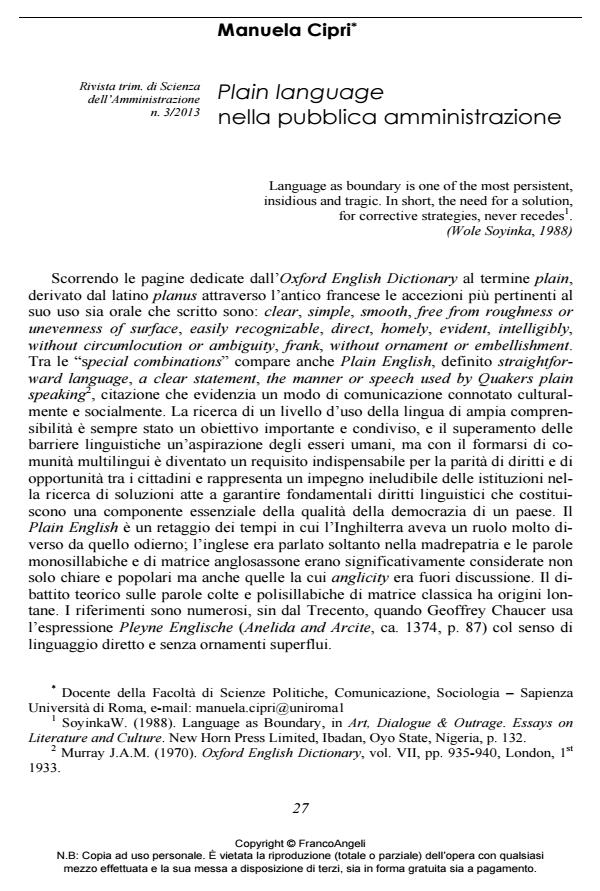Plain language in the public administration sector
Journal title RIVISTA TRIMESTRALE DI SCIENZA DELL’AMMINISTRAZIONE
Author/s Manuela Cipri
Publishing Year 2013 Issue 2013/3
Language Italian Pages 9 P. 27-35 File size 409 KB
DOI 10.3280/SA2013-003002
DOI is like a bar code for intellectual property: to have more infomation
click here
Below, you can see the article first page
If you want to buy this article in PDF format, you can do it, following the instructions to buy download credits

FrancoAngeli is member of Publishers International Linking Association, Inc (PILA), a not-for-profit association which run the CrossRef service enabling links to and from online scholarly content.
This paper focuses on the effects of Plain English and its usefulness for the semplification of institutional documents. It also deals with certain problematic aspects and in particular with the unilateral idiomaticity of the vocabulary that should be used.according to the Fight the Fog Campaign Simplification cannot consist in eliminating lexical items of Classical origin-polissyllabic latinate words that have a wide international circulation and which to be understood and used properly by non-native speakers of English only require a modicum of phonological, lexical and metalinguistic competence.
Keywords: Plain language, latinate words, clear communication
- Comparative analysis of development paths within the framework of the two-tier corporate governance model in Germany, Italy, and China Shu Li, in Corporate Law and Governance Review /2021 pp.17
DOI: 10.22495/clgrv3i1p2
Manuela Cipri, Plain language nella pubblica amministrazione in "RIVISTA TRIMESTRALE DI SCIENZA DELL’AMMINISTRAZIONE" 3/2013, pp 27-35, DOI: 10.3280/SA2013-003002